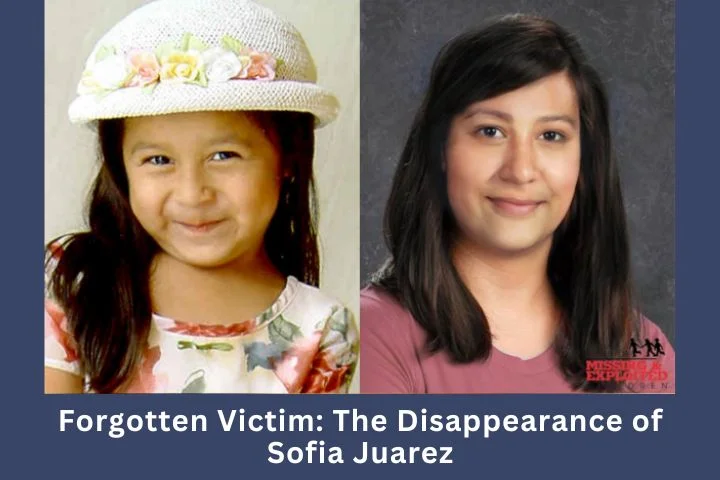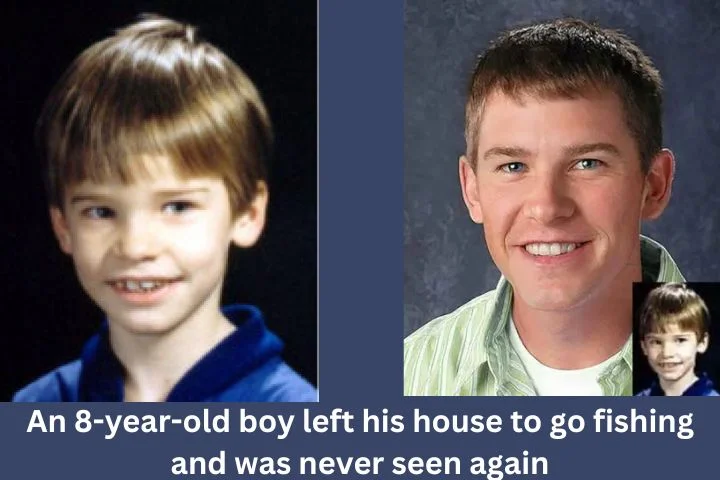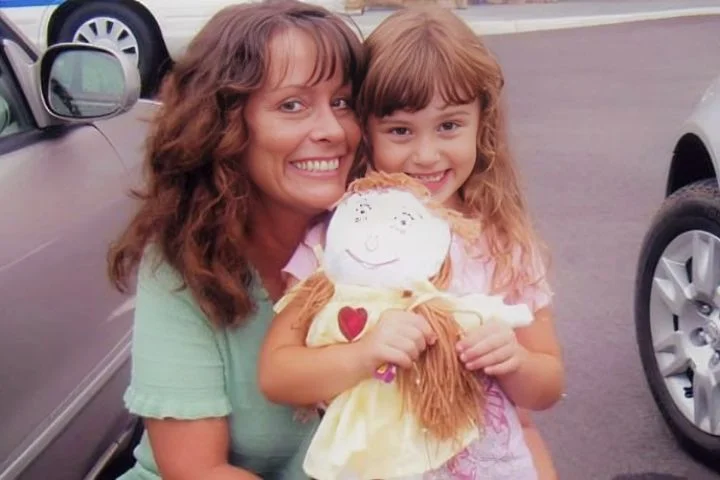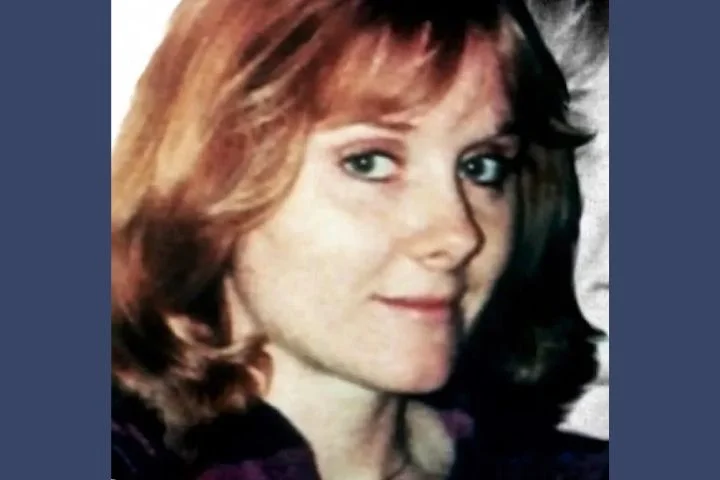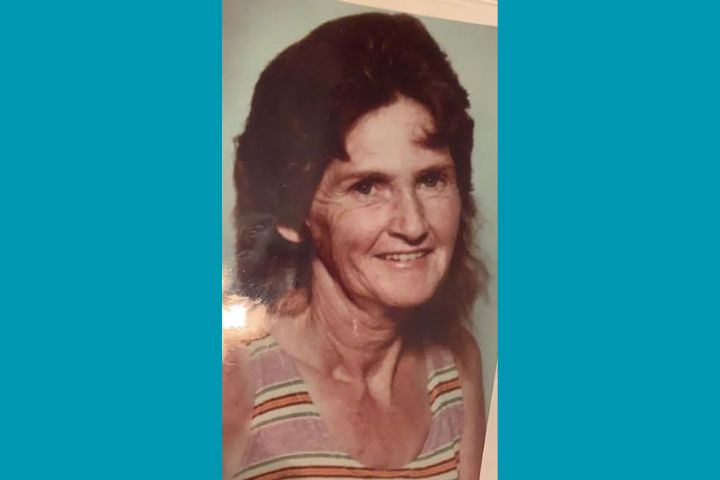Sofia Juarez was in an excited mood the evening of February 4, 2003. Her fifth birthday was the next day, and she was looking forward to opening her presents. She spent most of the night in her room playing with her Barbie dolls, but came out around 8:00 pm when she overheard her grandmother’s boyfriend, Jose Torres, say he had to run to a nearby convenience store. Sofia loved going places, so she asked her mother, Maria, if she could tag along with Jose. Maria agreed that she could go, and gave her a dollar so she could buy herself a treat. She helped Sofia tie her white Converse sneakers, gave her a hug, and told her to have fun. Sofia skipped happily out the door, clutching her dollar bill. It was the last time Maria would see her daughter.
Maria and Sofia had moved in with Maria’s mother, Ignacia, two years before. Ignacia’s home on East 15th Street in Kennewick, Washington was crowded — six of Maria’s siblings as well as Jose Torres also lived there — but they were a close family and Sofia loved being surrounded by so many relatives. Sofia often seemed shy and reserved around people she didn’t know well, but she was bubbly and fun-loving around her family. She had no contact with her biological father, but considered Jose to be part of her family and enjoyed going to places with him.
Jose was usually more than happy to have the little girl tag along with him, but on this particular evening, he was unaware that Sofia had been planning to come with him and left without her. By the time Sofia came outside, his car had already pulled out of the driveway. It’s not entirely clear what happened next, but police believe Sofia decided she was going to walk the five blocks to the store and meet Jose there. She never made it to the store, and she was never seen again.
Maria had no idea Jose left without taking Sofia; it wasn’t until he returned home about 45 minutes later that she realized there was a problem. As soon as she learned Sofia wasn’t with him, she gathered up the family and they began searching the neighborhood for the little girl. After 15 minutes of fruitless searching, Maria called the police.
Kennewick Police took the situation seriously from the start. The temperature had dropped below freezing, and Sofia had been wearing only a long-sleeved shirt and overalls. She had expected just to go on a short car ride so hadn’t bothered to wear a coat. If she had gotten lost somewhere in the neighborhood, police knew they had to find her quickly. Police, with the help of volunteers, immediately launched a search for Sofia, going door-to-door to all the houses she would have passed on her walk to the store. Police checked underneath porches, in parked cars and trash cans, and down every side street.
When a 10-year-old neighbor told police he saw Sofia walk down her driveway and speak to a man wearing all black, police worried that someone had abducted the child. The Washington Office of Emergency Management issued its first statewide Amber Alert for Sofia, and Maria made a public plea for the return of her daughter. The FBI was called in to join the investigation, and agents arrived to help in the search.
By morning, there was still no sign of Sofia. The family spent the little girl’s birthday assisting in the search for her and praying she would be found. Hundreds of police officers, firefighters, and volunteers walked shoulder-to-shoulder through fields and rural farmland, hoping for any clue to Sofia’s whereabouts. Divers were sent into the Columbia River, located less than two miles from the Juarez home. An Army National Guard helicopter flew over vast areas using thermal imaging equipment, and search dogs were used to try to pick up Sofia’s scent. They found nothing to indicate Sofia was still in the area.
Detectives continued to canvass the neighborhood looking for anyone who saw anything suspicious. They impounded Jose’s car and asked him to come to the station for questioning. He voluntarily submitted to a polygraph examination; he passed and was eliminated as a suspect. Investigators tracked down Andres Abragan, Sofia’s dad, and questioned him. He told police he had never met Sofia and wasn’t even sure if he was actually her father, but agreed to take a polygraph. He also passed and was not considered a suspect. One by one, detectives were able to rule out all members of Sofia’s immediate family from having anything to do with her disappearance.
A couple people mentioned seeing a white van in the area on the night Sofia went missing, leading police to question a registered sex offender who lived in the area and had access to a similar van. Police impounded the van and searched the man’s home without finding anything relevant to the investigation. The man was questioned extensively, but was eventually ruled out when he passed a polygraph and police could find nothing to suggest he had ever met Sofia.
By the end of the first week, police had received more than 200 tips about the case and had thoroughly investigated each one. All were dead ends. Every officer on the Kennewick Police force was assigned to the case in the hopes that they would be able to dig up some new leads, but found nothing. Despite the intensive search for the child, the news media paid relatively little attention to the case, and the number of tips coming in started to dwindle.
Maria didn’t believe Sofia would have gone anywhere with someone she didn’t know, leading detectives to explore the possibility that one of her relatives had abducted her and taken her to Mexico. It was a persistent rumor in the case, and Maria and Ignacia decided it was something they needed to investigate further. In March, they flew to Guadalajara and then traveled to Puebla, where they had family. They spent days tracking down people in Mexico, but came back to the United States confident that Sofia had not been taken there.
The Columbia Basin Dive Rescue team was sent back to the river, where they expanded their search area to include three miles of water and shoreline. They left confident that Sofia was not going to be found in the water, though they would periodically search along the coastline just to be sure.
Detectives desperately wanted to find Sofia, but after exhausting all leads they admitted that they still had no suspects in the disappearance. The case slowly went cold, and those outside of the immediate neighborhood appeared to forget all about the missing child. Her case was never picked up by the national news media; many speculated this was because Sofia came from a poor family and was being raised by a single mother. Whatever the reason, the case languished in the cold case files for two years.
By 2005, police had interviewed more than 1200 people, administered two dozen polygraph examinations, and searched several houses and vehicles looking for evidence related to Sofia. After getting a tip from a confidential informant, a search was conducted on farmland near Prosser in King County. According to the informant, who was being held on drug charges and likely hoped to strike a deal with police, Sofia had been accidentally run over and her body had been buried behind some homes on the property. Police spent a week using cadaver dogs and then backhoes in several locations on the farm, but were unable to find anything to substantiate the tip.
Maria moved back to California in 2007, though she continued to call the Kennewick Police Department looking for updates on her daughter’s case. She got married and was the mother of a 6-month-old son in 2009 when she died after experiencing complications from a medical procedure. She was only 26 years old, and always believed that Sofia was still alive somewhere. Her funeral mass was held in Kennewick, and a processional escorted Maria’s ashes to the church from the corner of 15th Avenue and Washington Street, where her daughter had last been seen. It was a touching tribute, and a way for the family to let everyone know that, despite losing Maria, they were going to continue the search for Sofia.
The Kennewick Police Department has never forgotten about Sofia, and there is always at least one detective assigned to work on her case. By 2020, the case file contained over 20,000 pages of information. In an attempt to get the case back out in the public eye, Kennewick Police and Washington State Police teamed up with a transportation company in February 2021; Sofia’s picture and case information will be displayed on the sides of two trucks. Like a traveling billboard, the trucks also list the number to call with tips about the case. Sofia’s family, noting that Sofia should have been celebrating her 23rd birthday in 2021, were pleased that the case was going to get some exposure and remain hopeful that they will one day learn what happened to her.
Sofia Juarez was 4 years old when she went missing in 2003. She has black hair and brown eyes, and at the time she went missing she was 3 feet tall and weighed 30 pounds, and she was missing her four front top teeth. She has a mole under one eye and her ears are pierced; she normally wore gold hoop earrings. She was last seen wearing a red long-sleeved shirt, blue overalls, violet socks, and white Converse sneakers.
